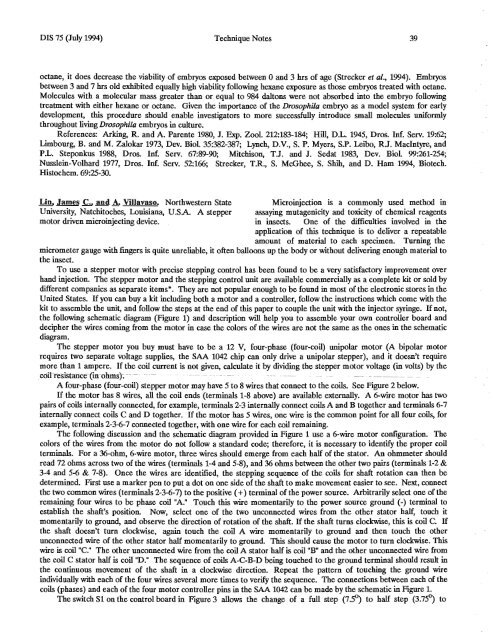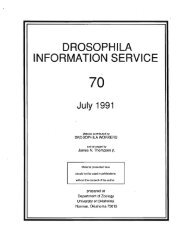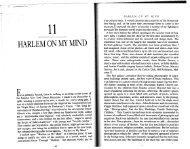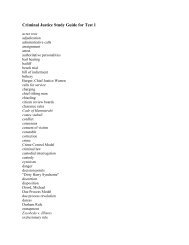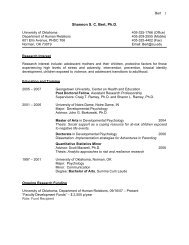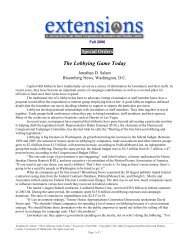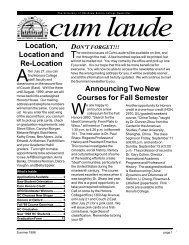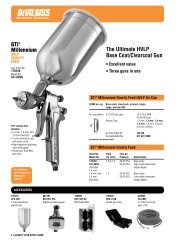Complete Issue - University of Oklahoma
Complete Issue - University of Oklahoma
Complete Issue - University of Oklahoma
Create successful ePaper yourself
Turn your PDF publications into a flip-book with our unique Google optimized e-Paper software.
DIS 75 (July 1994) Technque Notes 39<br />
octane, it does decrease the viabilty <strong>of</strong> embryos exposed between 0 and 3 hrs <strong>of</strong> age (Strecker et ai., 1994). Embryos<br />
between 3 and 7 hrs old exhbited equaly high viabilty followig hexae exposure as those embryos treated with octane.<br />
Molecules with a molecular mass greater than or equal to 984 daltons were not absorbed into the embryo followig<br />
treatment with either hexae or octane. Given the importance <strong>of</strong> the Drosophila embryo as a model system for early<br />
development, th procdure should enable investigators to more successfuy introduce smal molecules unormy<br />
throughout livig Drosophila embryos in cultue.<br />
References: Arkig, R. and A Parente 1980, J. Exp. ZoI. 212:183-184; Hil D.L. 1945, Dros. Inf. Servo 19:62;<br />
Limbourg, B. and M. Zalokar 1973, Dev. BioI. 35:382-387; Lynch, D.V., S. P. Myers, S.P. Leibo, RJ. Macintye, and<br />
P.L. Steponk 1988, Dros. Inf. Servo 67:89-90; Mitchion, T J. and J. Sedat 1983, Dev. BioI. 99:261-254;<br />
Nusslein-Volhard 1977, Dros. Inf. Servo 52:166; Strecker, T.R., S. McGhee, S. Shi and D. Ham 1994, Biotech.<br />
Histochem.69:25-3O.<br />
Lin, James h and A. Villavaso. Northwestern State<br />
<strong>University</strong>, Natchitoches, Louisiana, U.SA. A stepper<br />
motor drven microinjecting device.<br />
Microinjection is a commonly used method in<br />
assaying mutagenicity and toxicity <strong>of</strong> chemica reagents<br />
in insects. One <strong>of</strong> the diculties involved in the<br />
application <strong>of</strong> this technque is to deliver a repeatable<br />
amount <strong>of</strong> material to each specimen. Turg the<br />
micrometer gauge with figers is quite uneliable, it <strong>of</strong>ten baloons up the body or without delivering enough material to<br />
the inect.<br />
To use a stepper motor with precise stepping control has been found to be a very satisfactory improvement over<br />
hand injection. The stepper motor and the stepping control unt are avaiable commercialy as a complete kit or sold by<br />
dierent companes as separate items*. They are not popular enough to be found in most <strong>of</strong> the electronic stores in the<br />
United States. If you ca buy a kit includig both a motor and a controller, follow the instructions which come with the<br />
kit to assemble the unt, and follow the steps at the end <strong>of</strong> ths paper to couple the unt with the injector syrge. If not,<br />
the followig schematic diagram (Figue 1) and description wi help you to assemble your own controller board and<br />
decipher the wies coming from the motor in case the colors <strong>of</strong> the wies are not the same as the ones in the schematic<br />
diagram.<br />
The stepper motor you buy must have to be a 12 V, four-phase (four-coil) unpolar motor (A bipolar motor<br />
. cöìi-e~istance-(in-ohms)~-- - ---<br />
A four-phase (four-coil) stepper motor may have 5 to 8 wies that connect to the coils. See Figue 2 below.<br />
requies two separate voltage supplies, the SAA 1042 chip ca only drve a unpolar stepper), and it doesn't requie<br />
more than 1 ampere. If the coil curent is not given, caculate it by dividig the stepper motor voltage (in volts) by the<br />
If the motor has 8 wies, al the coil ends (terminals 1-8 above) are available externally. A 6-wie motor has two<br />
pais <strong>of</strong> coils internaly connected, for example, terminals 2-3 internaly connect coils A and B together and terminals 6-7<br />
internaly connect coils C and D together. If the motor has 5 wies, one wire is the common point for al four coils, for<br />
exaple, terminals 2-3-6-7 connected together, with one wie for each coil remaining.<br />
The followig discussion and the schematic diagram provided in Figue 1 use a 6-wie motor confguation. The<br />
colors <strong>of</strong> the wies from the motor do not follow a standard code; therefore, it is necessar to identif the proper coil<br />
terminal. For a 36-ohm, 6-wie motor, three wies should emerge from each hal <strong>of</strong> the stator. An ohmmeter should<br />
read 72 ohms across two <strong>of</strong> the wies (terminal 1-4 and 5-8), and 36 ohms between the other two pais (terminals 1-2 &<br />
3-4 and 5-6 & 7-8). Once the wies are identifed, the stepping sequence <strong>of</strong> the coils for shaf rotation ca then be<br />
determined. First use a marker pen to put a dot on one side <strong>of</strong> the shaf to make movement easier to see. Next, connect<br />
the two common wies (terminals 2-3-6-7) to the positive ( + ) terminal <strong>of</strong> the power source. Arbitrary select one <strong>of</strong> the<br />
remaig four wies to be phase coil "A" Touch thi wie momentary to the power source ground (-) terminal to<br />
establish the shaf's position. Now, select one <strong>of</strong> the two unconnected wies from the other stator hal, touch it<br />
momentarily to ground, and observe the diection <strong>of</strong> rotation <strong>of</strong> the shaf. If the shaf turns clockwe, this is coil C. If<br />
the shaf doesn't turn clockwse, agai touch the coil A wie momentarily to ground and then touch the other<br />
unconnected wie <strong>of</strong> the other stator hal momentarily to ground. Th should cause the motor to tu clockwe. This<br />
wie is coil "c." The other unconnected wie from the coil A stator hal is coil "B" and the other unconnected wie from<br />
the coil C stator hal is coil "D." The sequence <strong>of</strong> coils A-C-B-D being touched to the ground terminal should result in<br />
the continuous movement <strong>of</strong> the shaf in a clockwe diection. Repeat the pattern <strong>of</strong> touchig the ground wie<br />
individualy with each <strong>of</strong> the four wies several more ties to veri the sequence. The connections between each <strong>of</strong> the<br />
coil (phases) and each <strong>of</strong> the four motor controller pins in the SAA 1042 ca be made by the schematic in Figue 1.<br />
The switch Sl on the control board in Figue 3 alows the change <strong>of</strong> a fu step (7.SO to hal step (3.7s' to


